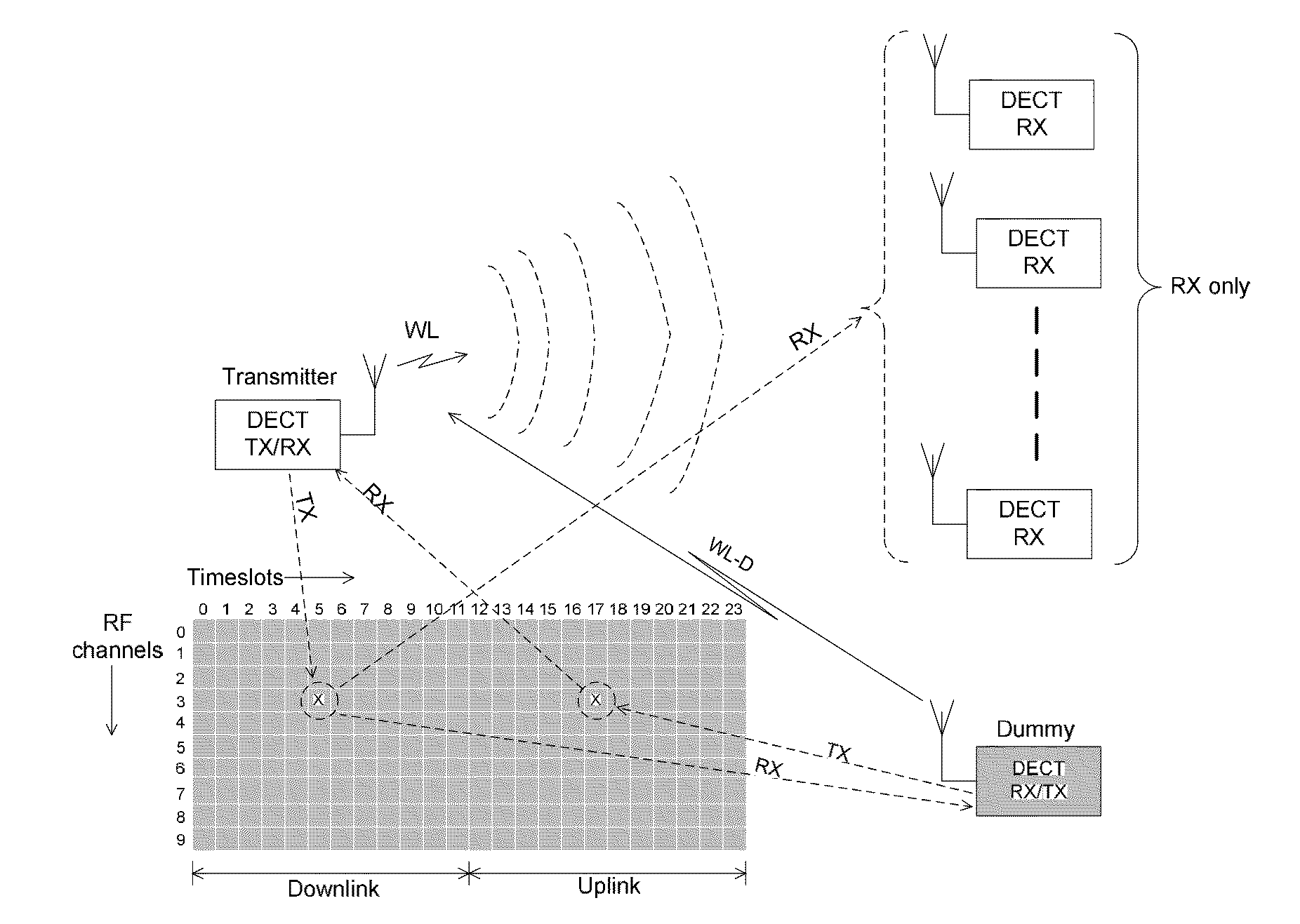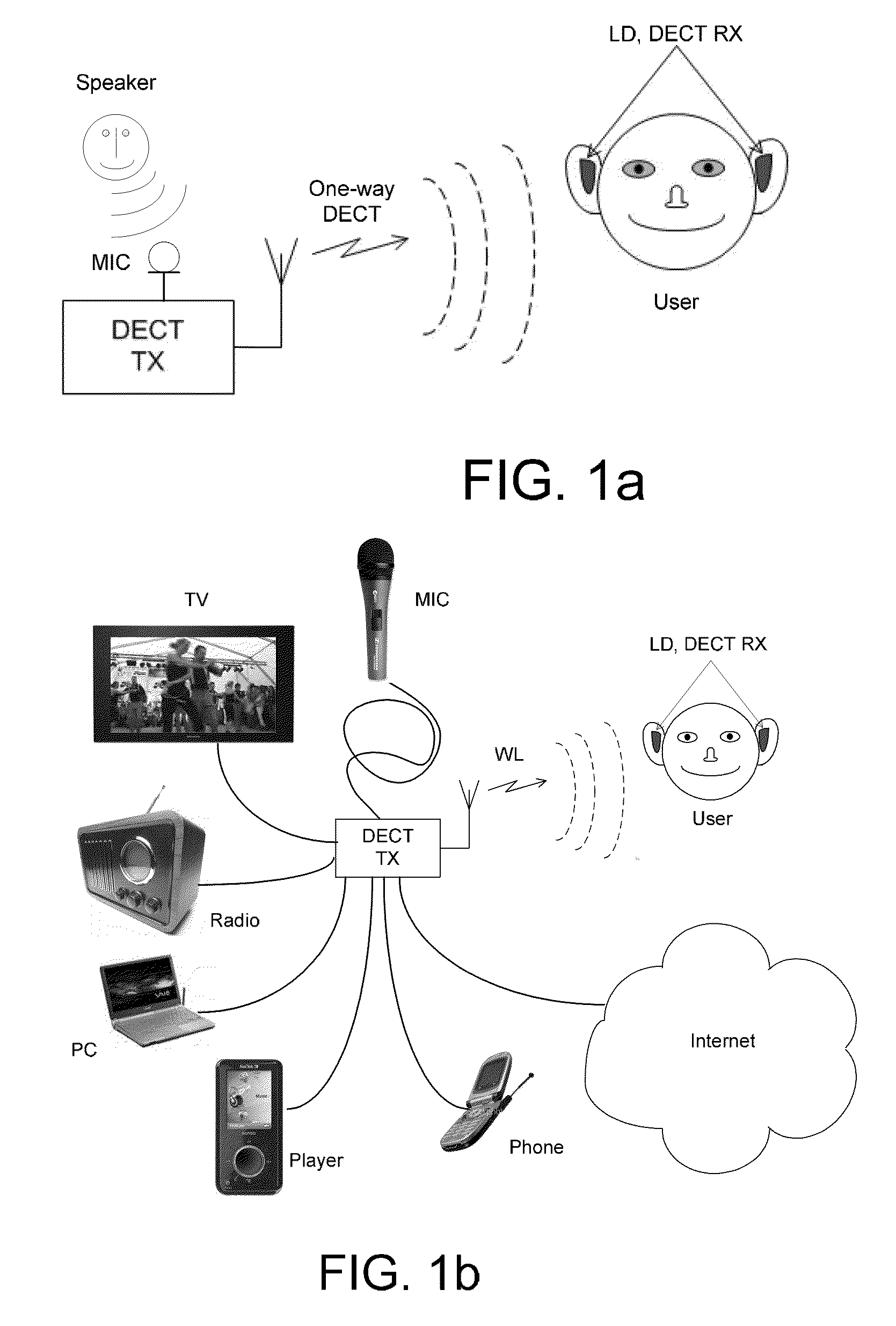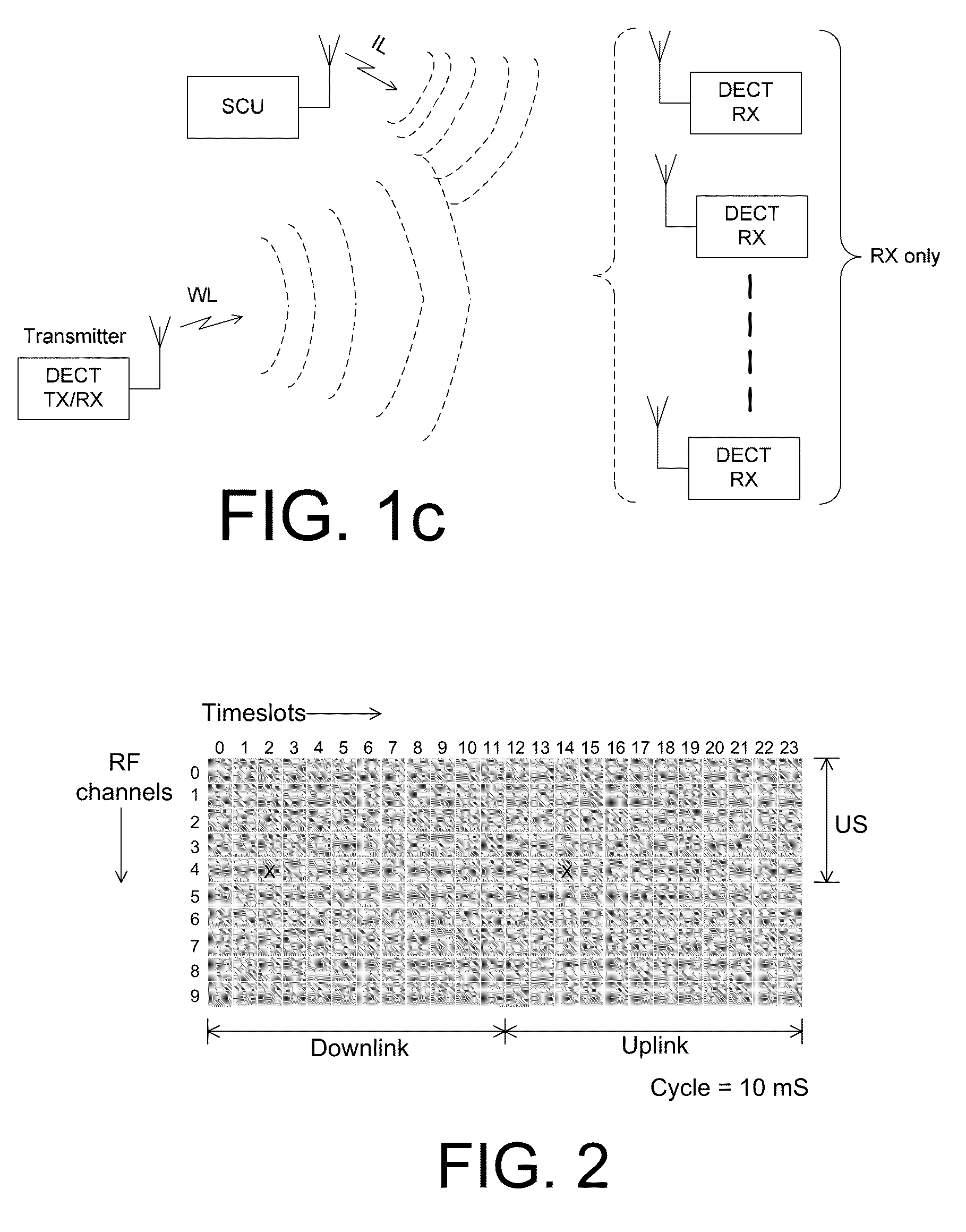Assistive listening system adapted for using DECT
a listening system and dect technology, applied in the direction of transceiving, supra/circum aural earpieces, intra aural earpieces, etc., can solve the problems of limited audio dynamic range, narrow band analogue fm based ald systems, and the use of digital modulation schemes is not free of problems, so as to minimize the effect of acoustic feedback
- Summary
- Abstract
- Description
- Claims
- Application Information
AI Technical Summary
Benefits of technology
Problems solved by technology
Method used
Image
Examples
Embodiment Construction
[0067]FIG. 1 shows embodiments of an assistive listening system comprising a transmitter (DECT TX) adapted for establishing a wireless link (One-way DECT) for transmitting a wireless signal comprising an audio signal according to the DECT standard from an audio source to a multitude of listening devices, here two (LD, DECT RX) forming part of a binaural fitting are shown, located at the ears of a User. The transmitter comprises a DECT transmitter (DECT TX) adapted for transmitting a wireless signal comprising an audio signal according to the DECT standard to a multitude of receivers (DECT RX). The listening device (LD) comprises a DECT receiver (DECT RX) adapted to receive a wireless signal comprising an audio signal according to the DECT standard from the transmitter (DECT TX). The DECT receiver can e.g. be integrated with other, such as the rest of the, functionality of the listening device. The DECT receiver can alternatively be housed in a separate physical body, e.g. directly e...
PUM
 Login to View More
Login to View More Abstract
Description
Claims
Application Information
 Login to View More
Login to View More - R&D
- Intellectual Property
- Life Sciences
- Materials
- Tech Scout
- Unparalleled Data Quality
- Higher Quality Content
- 60% Fewer Hallucinations
Browse by: Latest US Patents, China's latest patents, Technical Efficacy Thesaurus, Application Domain, Technology Topic, Popular Technical Reports.
© 2025 PatSnap. All rights reserved.Legal|Privacy policy|Modern Slavery Act Transparency Statement|Sitemap|About US| Contact US: help@patsnap.com



